|
|
|
Sort Order |
|
|
|
Items / Page
|
|
|
|
|
|
|
| Srl | Item |
| 1 |
ID:
083038
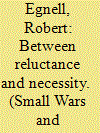

|
|
|
|
|
| Publication |
2008.
|
| Summary/Abstract |
The civil-military interface in peace support operations is changing due to increasingly overlapping tasks, increased military involvement in humanitarian activities, and increased integration of all involved actors, not least through various current strategic concepts. This article not only describes these trends, but also, more importantly, analyses certain consequences in terms of mission effectiveness. The focus of the analysis is the ideas of 'militarisation of humanitarian aid' and the reverse 'humanitarianisation of the military'. The main arguments of this contribution are that the assumptions of increased effectiveness stemming from civil-military integration cannot be taken for granted and that there are harmful consequences stemming from blurring the lines between civilian, humanitarian and military actors. There is, in other words, a need to better specify and explain the causal mechanisms that lead to effectiveness in complex peace support operations.
|
|
|
|
|
|
|
|
|
|
|
|
|
|
|
|
| 2 |
ID:
083036
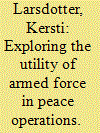

|
|
|
|
|
| Publication |
2008.
|
| Summary/Abstract |
The robust approach of the American forces in for example Afghanistan and Iraq is often criticised and compared to the more soft approach of the British forces. However, there are surprisingly few systematic studies on the relationship between the conduct of force and the outcome of peace operations. Two kinds of military conduct in Afghanistan have been explored in this article, one that could be called 'minimum force' and one that could be called 'show of force'. Contradicting the commonly held idea of the superiority of 'minimum force', 'show of force' correlated with a better outcome than the 'minimum force' approach. However, before arguing that a 'show of force' approach is a better way to conduct peace operations, more reliable data on the outcome, and additional case studies, are needed.
|
|
|
|
|
|
|
|
|
|
|
|
|
|
|
|
| 3 |
ID:
083039
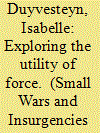

|
|
|
|
|
| Publication |
2008.
|
| Summary/Abstract |
This conclusion looks at the debate about the utility of force. It brings together the conclusions of the contributions in this special volume, linking them together with the positions in the debate and outlining further avenues for research.
|
|
|
|
|
|
|
|
|
|
|
|
|
|
|
|
| 4 |
ID:
083035
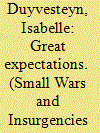

|
|
|
|
|
| Publication |
2008.
|
| Summary/Abstract |
This article looks at the use of armed force in order to stop terrorist activity. There is little agreement among experts about the importance of the use of force in past counter-terrorism campaigns. Based on limited empirical investigation, it is indicated that police and judiciary measures have been much more frequently used than the military. Concerning the effectiveness of the use of force; there are few indications that it contributes to lessening terrorism. Rather the opposite is the case; the use of force makes things worse. It complies with the aim of terrorist organizations to provoke the state into overreacting. More research is warranted into the specific conditions under which force is used. It remains possible that in very specific circumstances, military force can make a difference
|
|
|
|
|
|
|
|
|
|
|
|
|
|
|
|
| 5 |
ID:
083037
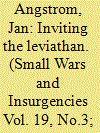

|
|
|
|
|
| Publication |
2008.
|
| Summary/Abstract |
This article examines the role of intervening forces in state-building efforts after state-collapse and civil wars. Based upon a case study from the 30 years of war in Afghanistan, it develops an explanation for failure of state-building attempts drawing upon bargaining theory, macrosociological state-building theory, and strategic thought. The explanation suggests that international state-building attempts condition and shapes a new strategic environment for the local actors. In doing so, the mode of state-building can create incentives for continuing the war or, carried out differently, create incentives for the parties to contribute in building a legitimate state from the rubble of the old state.
|
|
|
|
|
|
|
|
|
|
|
|
|
|
|
|
| 6 |
ID:
083034


|
|
|
|
|
| Publication |
2008.
|
| Summary/Abstract |
The US military went into Iraq with no clear understanding of or preparations for counterinsurgency. This fact, combined with poor postwar planning and failure to recognize the early development of the insurgency, severely hamstrung the American effort to secure and stabilize the country. Nevertheless, the US Army demonstrated the ability to adapt effectively from the bottom-up at the operational and tactical levels during General George Casey's tenure as commander of Multinational Force-Iraq from 2004 to 2006. Yet despite the success of population-security measures and the development of counterinsurgency doctrine, the military's top leaders in Iraq resisted the implementation of a true population-centric counterinsurgency strategy, opting instead to focus on a 'transition' exit strategy. It was not until after the transition approach collapsed amid the chaos of 2006 that counterinsurgency, and the utility of force in securing the will of the population, was embraced by America's strategic leadership
|
|
|
|
|
|
|
|
|
|
|
|
|
|
|
|
|
|
|
|
|